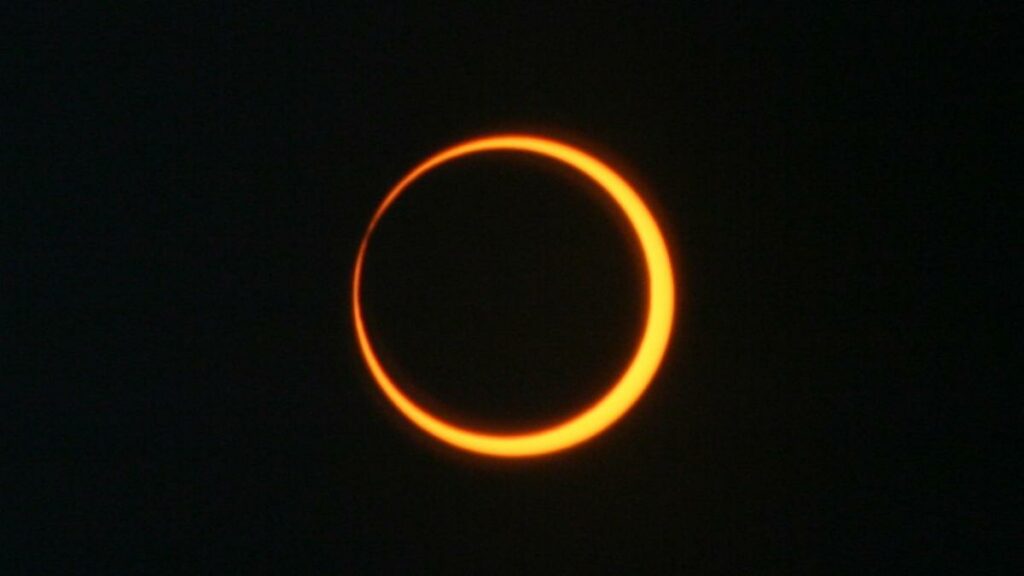When you buy through links on our articles, Future and its syndication partners may earn a commission.
An annular solar eclipse photographed on May 20, 2012. | Credit: NASA/Bill Dunford
On Oct. 2, an annular solar eclipse will be visible from parts of the Southern Hemisphere. Although much of South America will see a partial solar eclipse, some observers will witness a “ring of fire” around the moon from within a narrow path of annularity.
The observer’s location will dictate when the ring of fire will be visible.
Remember, during an annular solar eclipse, it is NEVER safe to look directly at the sun without solar eclipse glasses designed for solar viewing. Read our guide on how to observe the sun safely.
When to watch the “ring of fire” eclipse
The first location to see the partial phase of the annular eclipse begin will be at 11:43 a.m. EDT (1543 GMT), according to timeanddate.com, the first location to see the annular phase of the eclipse begin will be at 12:50 p.m. EDT (1650 GMT) and the first location to see the maximum eclipse will occur at 2:45 p.m. EDT (1845 GMT).
However, the best time to watch livestreams will be from 3:03 to 3:09 p.m. EDT (1903 to 1909 GMT), when the ring of fire will be seen for up to 6 minutes, 11 seconds from Easter Island/Rapa Nui. This is where most livestreams, including one from timeanddate.com, will come from.
Keep up with everything about the eclipse with Space.com’s solar eclipse live blog and watch the action unfold via numerous livestreams. Details of which will be released closer to the time.
The next time to tune in will be between 4:18 and 4:31 p.m. EDT (20:18 to 20:31 GMT) when the ring of fire will be visible from southern Chile and Argentina.
Here are the local times when the ring of fire will be visible in various Southern Hemisphere locations on Oct. 2.
The moon’s shadows explained
graphic illustration showing the moon’s shadows during an annular solar eclipse.
The moon’s shadows during an annular solar eclipse. (Image credit: NASA’s Scientific Visualization Studio)
Whether a solar eclipse will be total or annular depends on the current distance between Earth and the moon. The moon’s orbit of Earth is slightly elliptical, so the distance between the two changes slightly throughout the moon’s orbit.
If the moon is large enough in the sky to cover all of the sun, it causes a total solar eclipse. When that happens, it projects a very narrow shadow across Earth, creating a path of totality.
That’s not what’s occurring on Oct. 2, though, when the moon will be a little farther away in its orbit, so it won’t completely cover the sun. As seen from a roughly 165-mile-wide (266 kilometers) path across the Pacific Ocean, Patagonia (southern Chile and Argentina) and the Atlantic Ocean, the moon’s shadow will go straight across the sun’s center to create a brief ring of light dubbed a “ring of fire.”
Source link : http://www.bing.com/news/apiclick.aspx?ref=FexRss&aid=&tid=66fb8f0cb6884170b9000d140b966cd7&url=https%3A%2F%2Fnews.yahoo.com%2Fnews%2Ftime-annular-solar-eclipse-oct-180001650.html&c=3264409989242952380&mkt=en-us
Author :
Publish date : 2024-09-30 14:22:00
Copyright for syndicated content belongs to the linked Source.
